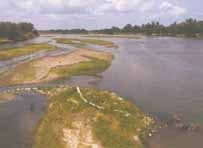The U.S. Environmental Protection Agency (EPA) has released its decision on Nebraska's 2006/2008 list of impaired waters.
The EPA is approving Nebraska's decision to list 177 waters and is postponing final action on 37 lakes and reservoirs. The EPA and the Nebraska Department of Environmental Quality (NDEQ) have agreed to revise Nebraska's lake and reservoir criteria plan. The revised criteria will be used in the next listing cycle to assess these 37 lakes and reservoirs.
NDEQ submitted its impaired waters list to EPA for review and approval, as required by the Clean Water Act (CWA). The CWA requires EPA to review the state's list of impaired waters to determine if the state reasonably considered available water quality-related data and identified waters to be listed.
The impaired waters identified on Nebraska's list will help to reduce sources of water pollution in the state. EPA applauds NDEQ for its diligent work in assessing the water quality of Nebraska's lakes and streams.
The EPA's Feb. 3 decision letter provides a more detailed description of its review and the basis for this action. The decision letter, including the Nebraska 2008 Water Quality Integrated Report, which includes the impaired waters list, is available at www.epa.gov/region07/news_events/legal.
Source: U.S. EPA


